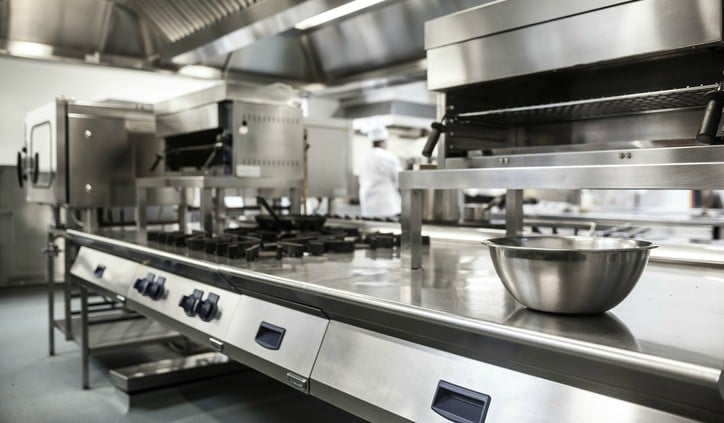
Precise dispatching, prompt repairs, and effective fixes are all at the heart of successful commercial food equipment services. Unfortunately, in an industry as demanding as the food service sector, it can be hard to deliver ... that is, if you don’t have the right tools and a plan to drive better results.
Want to improve service and simplify dispatching in your business? Read on. We’ve outlined ways for commercial food equipment service companies to make dispatching easier on employees and repairs better for customers.
Challenges Facing Commercial Food Equipment Service Companies
Commercial food equipment service companies are up against a wall of difficulties. Before jumping into solutions, here’s a look at some hurdles that make the industry uniquely challenging:
It’s a Fast-Paced Industry
Restaurants can’t afford downtime. They’re growing quickly, and many restaurants are moving to quick-service models. When equipment breaks down, the clock starts ticking, and money starts slipping down the drain. That puts a lot of pressure on commercial food equipment service companies to deliver quality repairs in a hurry.
Equipment Is Central
In some industries, equipment may be a convenience, but in the food service sector, it’s at the heart of the business. An out-of-order piece of equipment can mean menu items have to be pulled or services need to be shut down. It all makes for high stakes when equipment breaks down.
There’s Little Room for Error
Scheduling mishaps and delays are especially costly in the bustle of the food service industry. If dispatching isn’t fluent and precise, customers will become frustrated fast.
The Customer Experience Is Crucial
According to PwC, one out of every three customers will leave a company after a single negative experience. In the food industry, those mistakes are amplified. With so much on the line for food service businesses, there’s little room for error, and a single poor experience can completely sever a business relationship.
How to Simplify Dispatching and Service
With so much pressure on food equipment service companies to perform, seamless dispatching with stellar service is a must. Luckily, there are a few ways to simplify processes and elevate any customer’s experience:
Embrace Technology
The right technology can increase productivity, improve first-time fix rates, and unify the team. For instance, when you give techs on-the-job resources, such as mobile tablets, employees spend less time diagnosing repairs. They can find answers and make fixes quickly. For dispatchers, that also means fewer jobs go long or turn into late work for the next customer.
When it comes to dispatching, all-in-one field service software can be a complete game changer. Here are a few ways this technology helps:
- It connects the whole team: Rather than having dispatching, scheduling, internal teams, and techs all working with their own systems, all-in-one software lets the whole team work within a single platform. That means data is being fed into a unified system, and dispatchers can clearly see what’s going on.
- It makes it easy to track techs: If you’re a dispatcher, you might end up spending your entire day calling techs and trying to get an update on a job’s status. Field service software solves the problem by letting dispatchers track techs in real time. That means they can avoid last-minute hang-ups and deploy techs efficiently.
Rethink Equipment Tracking and History
If you don’t have the right technology, keeping track of equipment can be a nightmare. However, advanced field service software lets you easily track equipment, view histories, record notes, and document any issues that come up. Plus, you can quickly create estimates on the fly. All of this advanced documentation leads to faster fix times and happier customers.
Focus on Efficiency
In the commercial food equipment service industry, efficiency is everything. By looking at processes with fresh eyes, business owners can ease employees’ stress and rake in more profits. That may mean using technology that streamlines communication and reduces the number of trips to the office for techs. It could also mean using software to keep track of techs and cut down callbacks. In all cases, a focus on efficiency lightens the load for the whole team.
How to Choose Software That Simplifies Processes
Even though software can simplify processes, not every program is made equal. If you want to pick out software that excels, there are some simple qualities to look for:
It Should Be All-in-One Software
It’s not always obvious during the shopping process, but if you’re stuck using multiple software systems to run your food equipment service company, it can cause massive problems.
First, whenever your team has to enter figures into multiple systems, there’s naturally going to be extra work—and a higher potential for error. Oftentimes, employees end up entering the same data in different programs, and their precious time is wasted. Worse yet, every new system requires its own training and time to learn.
Second, new programs come with extra costs. Whether it’s the price of the software itself, extra training, or fixing mistakes, the chaos of disjointed software ends up hitting the company’s bottom line.
Finally, when you have multiple programs, you miss out on opportunities to connect your workflows. It’s nearly impossible to make better purchasing decisions and dig into reports when your information isn’t connected.
Instead, an all-in-one system connects everything from reporting to communication, inventory tracking, customer management, and scheduling. That makes it easy to dive into performance metrics and pave a path to higher profits.
The Software Needs to Scale
It may be tempting to pick up simple software to address the most urgent problem you’re facing. Unfortunately, that can be a big mistake. When a company outpaces the software’s capabilities, it stops the company’s growth.
The result?
Owners are left paying for additional functions as the company’s needs and demands march forward. Perhaps even worse, a lack of scalability means the company loses its oversight and control. As a business owner, you’re left at the mercy of your software.
On the other hand, if the software is built to scale with the company, you have the power to follow through with the plans that fit your unique growth strategy.
Providers Should Be Partners
Another trap some food equipment service companies fall into is picking up programs from one-off software providers. That may seem like a simple solution, but these one-off providers can cause issues when it comes time to use the software. For instance, if the team needs technical support, wants to learn about new functions, or simply doesn't understand how to use the software, your employees would have to figure things out on their own.
Instead, you can avoid these problems by working with a partner you can trust. Your software provider should offer training and additional resources that push your operation forward.
The Software Must Be Built for the Industry
In such a fast-paced market, it’s crucial that the software you choose is built for the industry. Food equipment services have unique challenges, and success hinges on software that’s made to help you thrive in this demanding market.
See How Software Can Simplify Your Business
In the commercial food equipment service industry, it’s essential to simplify processes, improve dispatching, and provide repairs efficiently. Luckily, the right software can help your company deliver on all three fronts.
Want to see advanced software in action?
Schedule a demo today to learn how our software can help your business accomplish its goals.


